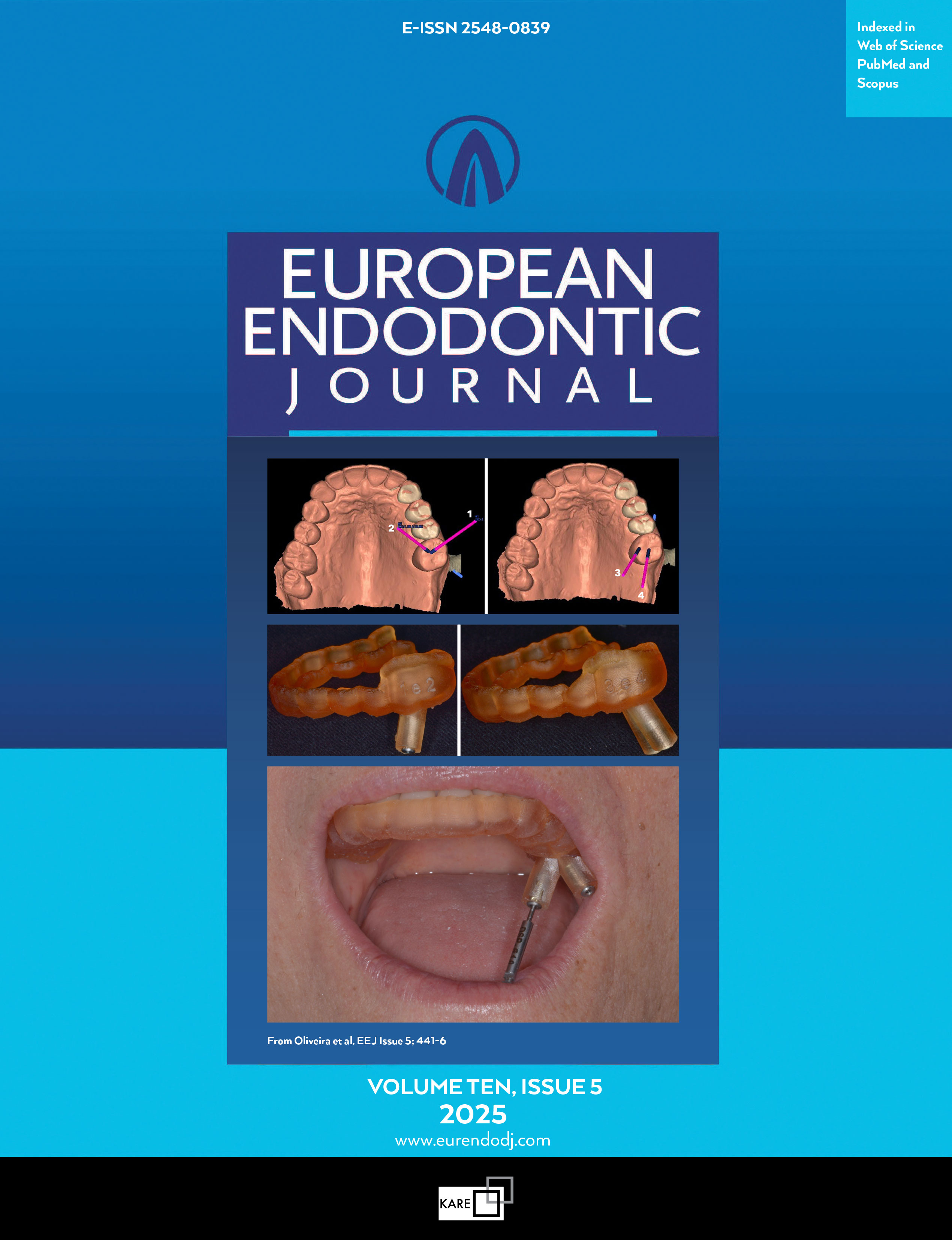Metrics
2024 IMPACT FACTOR
5 year Impact Factor
Eigenfactor Score
2024 CiteScore
Journal Citation Reports
(Clarivate 2025, JIF Rank)
Three-Dimensional Filling Quality of Cold Lateral vs Warm Vertical Condensation: A Micro-CT and CBCT-Based Systematic Review and Meta-Analysis
Mahmood Dashti1, Niloofar Ghadimi2, Turgut Yagmur Yalcın3, Houyar Zahmatkesh4, Kaan Orhan5, Shahryar Irannejad Rankouhi6, Zohaib Khurshid7, Muhammad Sohail Zafar81Dentofacial Deformities Research Center, Research Institute of Dental Sciences, Shahid Beheshti University of Medical Sciences, Tehran, Iran2Dental Material Research Center, TeMS.C., Dental School, Azad University of Medical Sciences, Tehran, Iran
3Department of Endodontics, Faculty of Dentistry, Istanbul University, Istanbul, Turkiye
4School of Dentistry, Tehran University of Medical Sciences, Tehran, Iran
5Department of Dento-maxillofacial Radiology, Faculty of Dentistry, Ankara University, Ankara, Turkiye; Ankara University Medical Design Application and Research Center (MEDITAM), Ankara, Turkiye; Department of Oral Diagnostics, Faculty of Dentistry, Semmelweis University, Budapest, Hungary
6Dental School, Alborz University of Medical Sciences, Karaj, Iran
7Department of Prosthodontics and Dental Implantology, King Faisal University, Al-Ahsa, Saudi Arabia; Center of Excellence for Regenerative Dentistry, Department of Anatomy, Faculty of Dentistry, Chulalongkorn University, Bangkok, Thailand
8Department of Clinical Sciences, College of Dentistry, Ajman University, Ajman, United Arab Emirates; Center of Medical and Bio-allied Health Sciences Research, Ajman University, Ajman, United Arab Emirates; 13. School of Dentistry, University of Jordan, Amman, Jordan
Objective: This systematic review and meta-analysis compared the efficacy of cold lateral condensation (CLC) and warm vertical condensation (WVC) in endodontic obturation. The primary focus was to evaluate three-dimensional (3D) obturation quality, including void volume, gutta-percha adaptation, and filling completeness, using Micro-Computed Tomography (Micro-CT) and Cone-Beam Computed Tomography (CBCT).
Methods: A systematic search was conducted in PubMed, Embase, Scopus, and Web of Science up to December 2024 following PRISMA guidelines. Studies were included if they compared CLC and WVC using Micro-CT or CBCT imaging and reported quantitative outcomes on gutta-percha filling and void volume. A random-effects meta-analysis was performed due to high heterogeneity (I²=80%), with standardized mean differences (SMD) and 95% confidence intervals (CIs) calculated.
Results: Twelve studies were included in the review, with five contributing to the meta-analysis. WVC showed superior obturation quality along the full canal length (SMD=-2.19; 95% CI: -3.78 to -0.60; p=0.02). However, in the apical third, the difference was not statistically significant (SMD=-0.79; 95% CI: -1.92 to 0.35; p=0.13). While WVC offered superior adaptation and fewer voids, it also presented a higher risk of sealer extrusion. CLC, while cost-effective and widely used, exhibited more voids and poorer adaptation, particularly in complex canals. However, substantial heterogeneity (I²=80-85%) among included studies limits confidence in these pooled estimates.
Conclusions: WVC achieves superior obturation quality along the full length; however, the evidence remains inconclusive for the apical third, reflecting uncertainty in this anatomically complex region. High study heterogeneity underscores the need for methodological standardization. Given the high heterogeneity and methodological variation among included studies, including studies using alternative models or techniques, the findings should be interpreted with caution and serve as a basis for future standardized research.(EEJ-2025-05-077)
Manuscript Language: English


